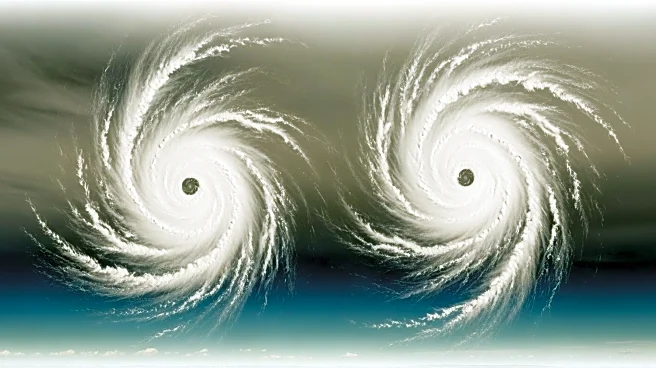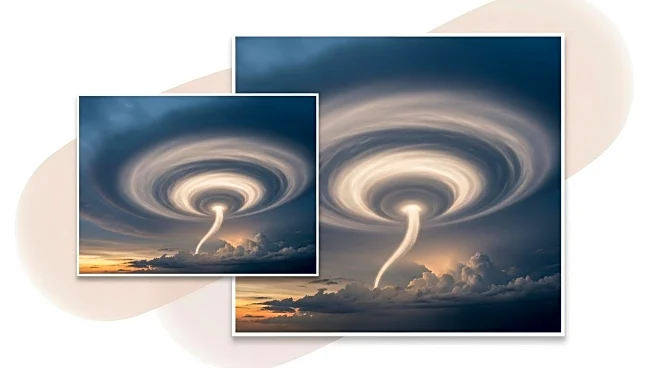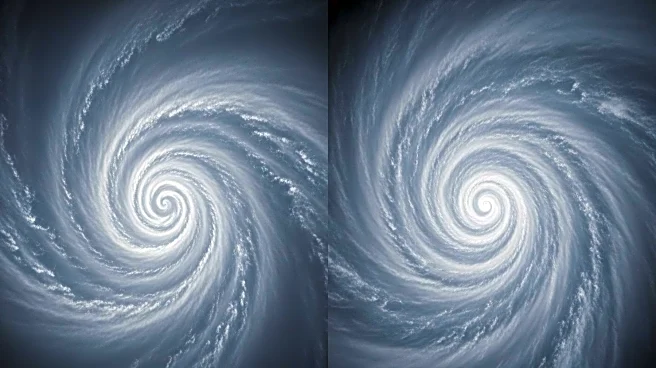What is the story about?
What's Happening?
The Fujiwhara effect describes the interaction between two tropical cyclones when they come close enough to influence each other's strength and track. This phenomenon can lead to the storms orbiting around a common center, merging into a single system, or one storm absorbing the other. The effect is named after Japanese meteorologist Sakuhei Fujiwhara, who first theorized it in 1921. The potential for the Fujiwhara effect is being monitored off the southeastern US coast, where Tropical Storm Humberto and another stormy area could interact.
Why It's Important?
The Fujiwhara effect poses significant forecasting challenges, as it can alter the expected paths and intensities of tropical cyclones. Understanding this phenomenon is crucial for accurate weather predictions and disaster preparedness, especially in hurricane-prone regions. Improved forecasting can help mitigate risks and enhance response strategies for affected communities.
What's Next?
Meteorologists will closely monitor the potential interaction between Humberto and the other storm to assess the likelihood of the Fujiwhara effect occurring. Continued research and observations will contribute to refining forecasting models and improving predictions of storm behavior, ultimately benefiting public safety and disaster response efforts.
Beyond the Headlines
The study of the Fujiwhara effect highlights the complexities of atmospheric interactions and the challenges of predicting weather patterns. It underscores the importance of ongoing research and technological advancements in meteorology to improve forecasting accuracy and disaster preparedness.
AI Generated Content
Do you find this article useful?













